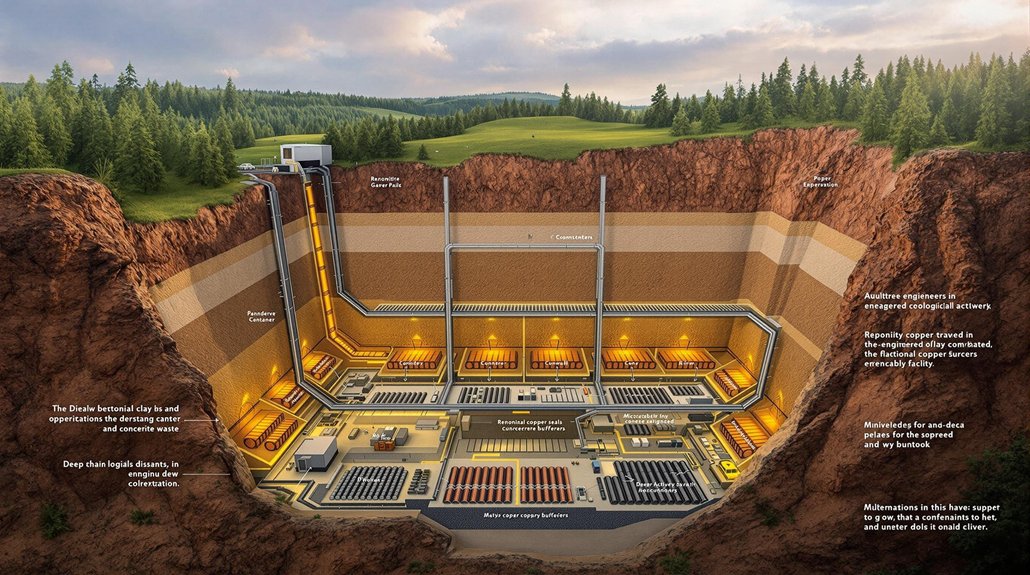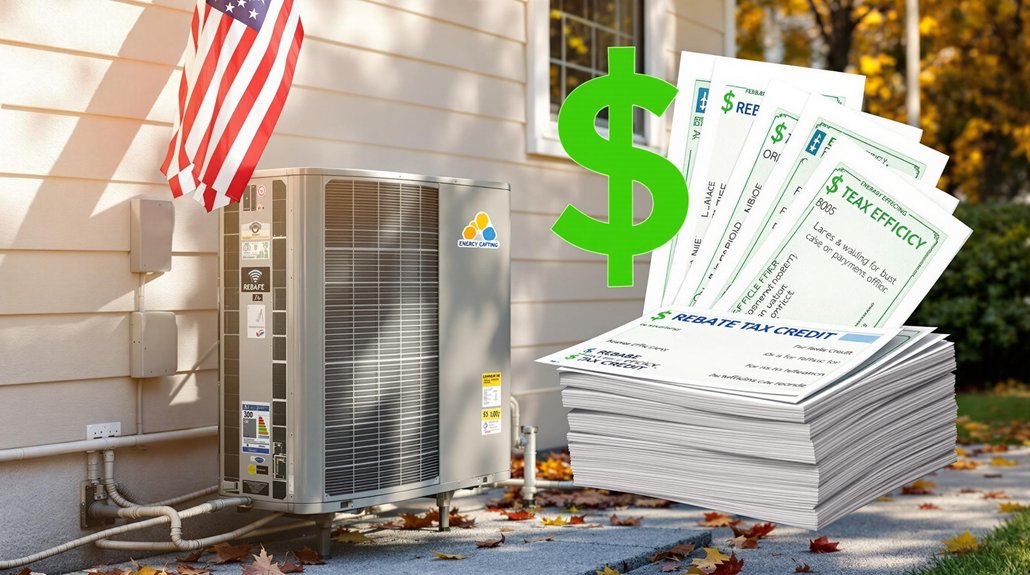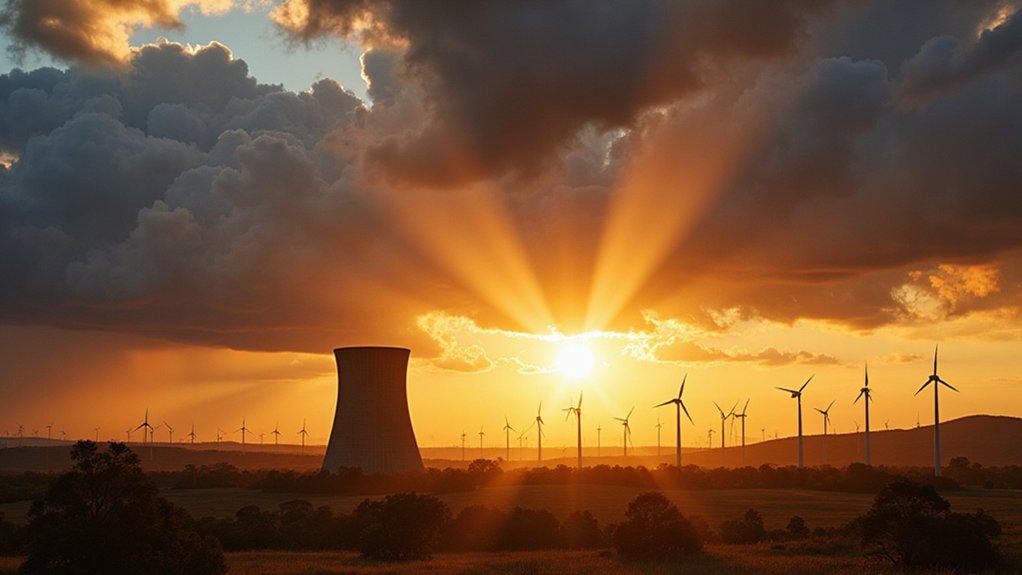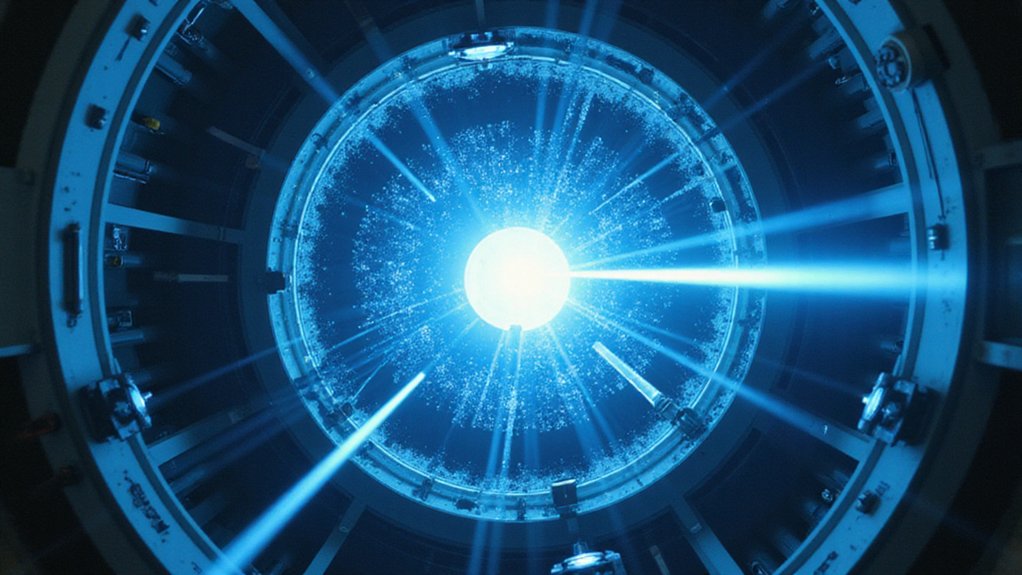Deep geological repositories are emerging as humanity’s best shot at containing deadly nuclear waste. Finland’s Onkalo facility leads the charge, burying radioactive materials 400+ meters underground in stable rock formations. The concept uses multiple barriers—natural and engineered—to isolate waste for millennia. Public resistance and geological uncertainties remain hurdles. Not perfect, but beats the alternative of temporary storage sites scattered globally. The underground solution might just give our toxic legacy its final resting place.
While nations around the world have embraced nuclear energy for decades, they’ve struggled with a radioactive elephant in the room: what to do with the waste. The toxic byproducts of nuclear power generation remain dangerous for thousands—sometimes hundreds of thousands—of years. Not exactly something you can toss in the regular trash.
Enter the deep geological repository. The concept is simple: bury the stuff. Deep. We’re talking 200 to 1,000 meters underground, encased in multiple engineered barriers and surrounded by stable rock formations. Finland’s already doing it with their Onkalo facility—the world’s first operational deep geological repository. Sweden and the UK aren’t far behind. Turns out, Mother Earth might be our best radiation shield.
Deep under your feet may lie humanity’s most ambitious trash can—a fortress designed to outlast civilization itself.
Before getting buried, nuclear waste doesn’t just sit around. High-level waste from spent fuel typically cools in pools for 5-10 years. Then it’s often transferred to dry cask storage—concrete and steel containers that currently house over 80,000 metric tons of spent fuel in the US alone. The search for permanent repository sites has been stalled for decades, leaving dry casks as the primary interim solution. Temporary fixes for a permanent problem.
The waste itself varies. There’s the really nasty stuff (high-level waste), the medium-bad stuff (intermediate-level), and the less-terrible stuff (low-level). Scientists transform liquid high-level waste into glass through vitrification. Yes, radioactive glass. That’s a thing. Since the 1950s, over 250,000 tonnes of nuclear waste have accumulated globally across 14 countries, highlighting the urgency of finding permanent solutions.
Critics worry about earthquakes, groundwater contamination, and terrorist attacks. Valid concerns. But above-ground storage isn’t exactly risk-free either.
Different countries tackle the problem differently. France reprocesses spent fuel. Japan explores deep boreholes. Canada’s still picking a site. Russia’s building underground labs. Australia’s thinking bigger—maybe a multinational repository.
Technology helps. Newer reactors produce less waste. Transmutation could reduce long-lived radionuclides. Robots handle the dangerous stuff. AI helps select suitable sites.
The biggest hurdle? Politics and public acceptance. Try convincing a community to host deadly waste for 100,000+ years. That’s a tough sell, even with the best science behind it.








